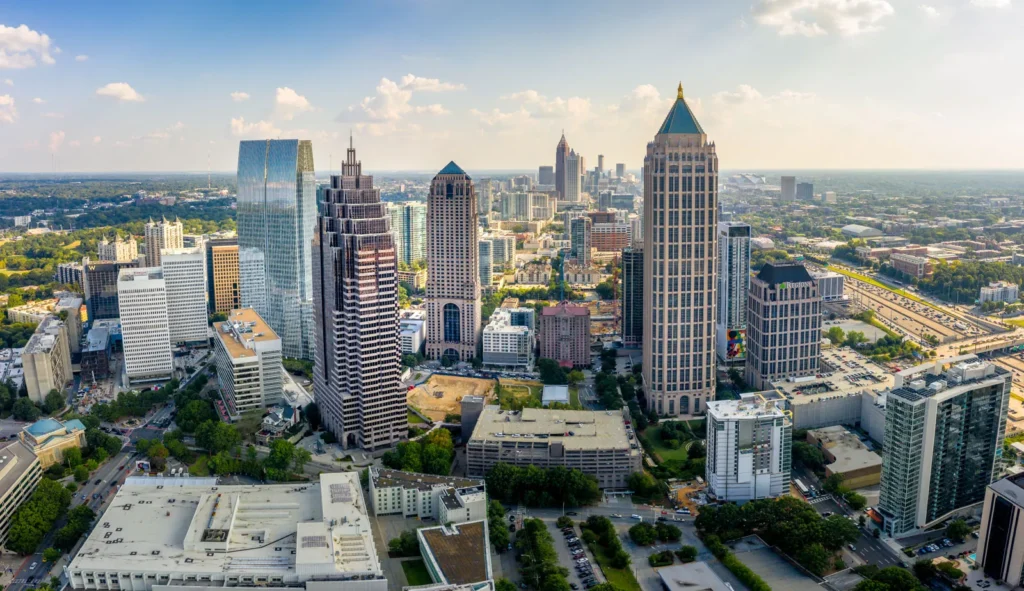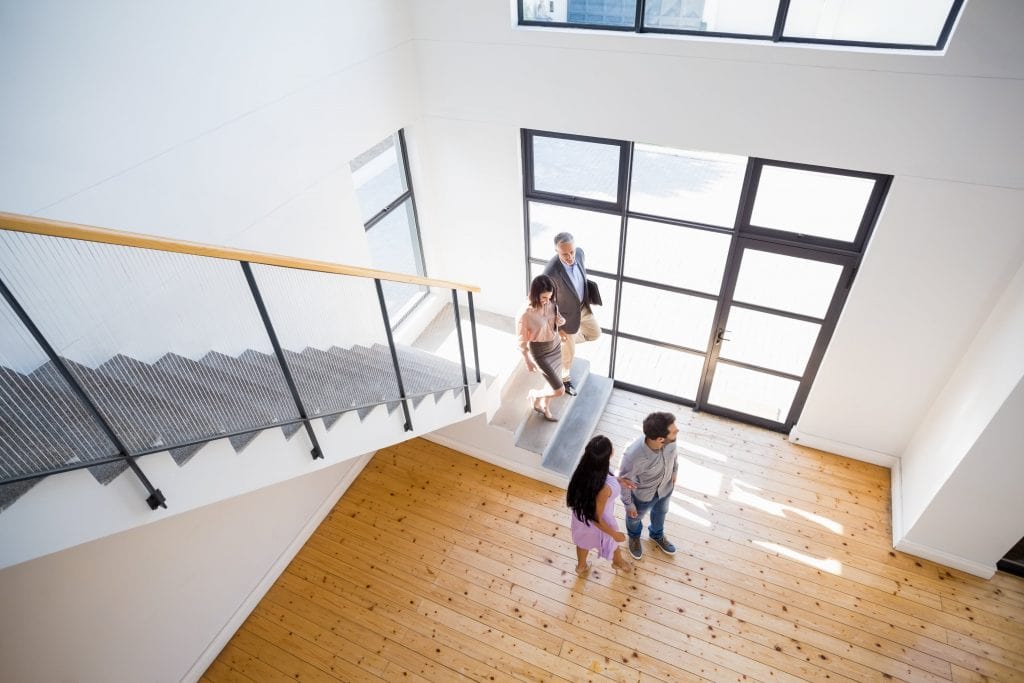According to a recent report from Point2 Homes, the BTR industry hit a new all-time high in 2024. In contrast to the 6,000 and 7,000 units annually that were coming up in the years prior to the pandemic, the 39,000 rental homes that were finished last year represent a 15.5% rise over the previous year, according to Yardi Matrix statistics as of March.
As new housing trends emerge and conditions change, new data has found that the single-family rental (SFR) market is expanding. For several years, the build-to-rent (BTR) sector of the single-family home construction market has experienced one of the fastest rates of growth, and 2024 was no exception.
Single-family rentals are ideal because they combine the room, comfort, and privacy of a single-family home with the flexibility and low maintenance of renting. Therefore, it should come as no surprise that builders are responding by stepping up the development of new single-family houses, which will help ease the housing crisis and add additional rental possibilities.
Top 10 States w/ the Most Build-to-Rent Completions in 2024:
| Rank | State | Build-to-Rent Units Completed in 2024 | Record |
|---|---|---|---|
| 1 | Texas | 6,9946,9946,994 | 5-Year High |
| 2 | Florida | 5,3795,3795,379 | 5-Year High |
| 3 | Arizona | 4,8124,8124,812 | 5-Year High |
| 4 | Georgia | 4,0954,0954,095 | 5-Year High |
| 5 | North Carolina | 2,8262,8262,826 | 5-Year High |
| 6 | California | 1,8481,8481,848 | 5-Year High |
| 7 | Ohio | 1,8191,8191,819 | 5-Year High |
| 8 | South Carolina | 1,7701,7701,770 | – |
| 9 | Alabama | 1,5341,5341,534 | 5-Year High |
| 10 | Utah | 1,3051,3051,305 | 5-Year High |
While the housing market is gradually changing, the build-to-rent sector is still growing due to a number of reasons:
- Millennials who want to move out of standard flats and start kids but are still unable to afford homeownership
- Unaffordable property prices are keeping out prospective homeowners of all ages.
- Renters with high incomes by choice.
- Workers who are remote or hybrid require additional space.
- Older homeowners and retirees who desire the space, financial flexibility, and low-maintenance lifestyle that renting provides but are unable to age in place.
Additionally, it is clear that developers are responding to pressure from increasing demand, which is affecting the affordability of homeownership and the need for renters to live in spacious homes in highly amenitized communities, as evidenced by the fact that single-family homes now make up nearly 10% of all home builds, up from roughly 3% a few years ago.
Regional Differences Affecting Build-to-Rent Markets
Build-to-rent homes are spreading outside of the more established Southwestern markets into Georgia, North and South Carolina, Florida, and even California, even though the South still leads the BTR movement because of its vast tracts of undeveloped land, laxer zoning regulations, and quicker permitting procedures.
In fact, California added more than 1,800 rental units and will soon finish 2,270 more, while Florida has already completed 5,379 single-family dwellings in 2024 alone and has 7,792 more rental homes under construction.
These two Southwestern leaders continue to dominate the build-to-rent market with nearly 7,000 and more than 4,800 completed units, respectively, thanks to Texas’ thriving job market and Arizona’s investments in trade, transportation, and health care services. Due to the 5,379 and 4,095 new single-family rentals, respectively, Florida and Georgia, two economic giants known for their prosperous business and labor environments, are not far behind.
The demand for rental properties keeps rising as more professionals, entrepreneurs, and remote workers are drawn to these cities and metro areas by the opportunities they offer. According to the most recent U.S. Census data, the majority of the states where build-to-rent completions hit historic highs also experienced notable population growth.
According to Census research:
- Nine states (Arizona, California, Florida, Georgia, New Jersey, New York, North Carolina, Texas, and Washington) saw population increases of more than 100,000 between 2023 and 2024.
- Texas, the nation’s second most populated state, saw the biggest rise in population, gaining around 563,000 residents to reach 31,290,831 in 2024.
- Both states had growth significantly above the national average, with North Carolina’s population surpassing 11 million (11,046,024) and Florida’s currently over 23 million (23,372,215).
Top 10 Metros w/ the Most Build-to-Rent Completions in 2024:
| Rank | Metro | Build-to-Rent Units Completed in 2024 | Record |
|---|---|---|---|
| 1 | Phoenix | 4,4604,4604,460 | 5-Year High |
| 2 | Dallas | 3,1973,1973,197 | – |
| 3 | Atlanta | 3,0353,0353,035 | 5-Year High |
| 4 | Houston | 2,5052,5052,505 | 5-Year High |
| 5 | Charlotte, NC | 1,4151,4151,415 | 5-Year High |
| 6 | Jacksonville, FL | 1,2011,2011,201 | 5-Year High |
| 7 | Huntsville, AL | 1,0981,0981,098 | 5-Year High |
| 8 | Columbus, Ohio | 1,0181,0181,018 | 5-Year High |
| 9 | Tampa, FL | 1,0051,0051,005 | 5-Year High |
| 10 | Minneapolis | 926926926 | 5-Year High |
Overall, in order to build communities where living space was no longer a barrier, developers started to shift their focus away from densely populated places (such as major business districts and the most sought-after, in-city neighborhoods) with the introduction of single-family rentals.
The build-to-rent market has grown substantially due to a combination of factors, including the need for space from remote workers, the desire of young families to settle down and find larger homes, the creation of strong jobs, and the increasing unaffordability of the for-sale sector. These factors include the need for more spacious dwellings, modern home features and amenities, amazing conveniences, and, last but certainly not least, the sense of community that many may be seeking.

The “Meccas” of Built-to-Rent Markets
Metro areas nationwide have added more new single-family rentals than entire regions combined, regardless of how well states are performing. The main cause of this is the possibility for the growth of expansive housing rental communities brought about by the larger metro areas in states like Texas and Arizona. Therefore, the majority of the expansion in the BTR sector is driven by the Southwestern and Southeastern metro areas, which lead with the most completions.
Phoenix: “The Valley of the Sun”
With an astounding 4,460 new units created in 2024—an 18% increase over the previous year—Phoenix is in the lead. Phoenix, the capital and largest city of Arizona, is a draw for both locals and visitors since it is home to four Fortune 500 businesses and prospers from important sectors including manufacturing, real estate, banking, and insurance.
Furthermore, a closer examination of the metro’s population growth demonstrates that the area is headed in the correct direction: The Phoenix metro had the sixth-highest net growth of any metro in the country, with 85,000 extra residents in only one year, from 2023 to 2024.
Dallas: “The Triple D”
With 3,197 rental properties constructed in 2024, the notable metro of Dallas—home of “America’s Team” and one of Texas’ biggest BTR markets—comes next, after Phoenix. Dallas’ data from the previous year show a 0.1% drop in completions, which kept this metro from reaching a five-year high and distinguishing it from the other metros in this top 10. Houston, a fellow popular Texas metro, more than makes up for Dallas’ slowdown— as “Space City” saw a 187% increase over the prior year.
Atlanta: “A-Town”
With 3,035 new single-family rentals, Atlanta comes in second, up 15% year over year from 2,651 units the year before. Similar to Phoenix, Atlanta has added over 75,000 residents in a single year, placing it among the top 10 metro areas for population growth. Demand is obviously high, and the current boom in the build-to-rent sector makes perfect sense in this context.

Which States Offer More Construction Opportunities?
Similar to Phoenix and Atlanta, Dallas’s and Houston’s build-to-rent development is in line with the general trend of population expansion: The two Texas metro areas saw the largest population growth between 2023 and 2024—198,171 in Houston and 177,922 in Dallas—second only to the New York-Newark-Jersey City metro area.
Like Phoenix, where developers have a lot of latitude in how they design and build, Texas has its own set of benefits that make its cities and metropolitan areas always appealing to both newcomers and current residents. People who want to avoid the high prices of coastal towns continue to choose Texas because of its broad economy, robust employment market, low state income tax, and reasonably priced housing.
With nearly 1,000 new rental homes constructed in just the past year, six additional metro areas are now competing in the major leagues and looking to expand their build-to-rent sector.
The top six metros w/ the biggest YoY inventory increase:
- Houston
- Charlotte, NC
- Jacksonville, FL
- Huntsville, AL
- Columbus, Ohio
- Tampa, FL

At a whopping 255%, Huntsville, AL, experienced the most remarkable year-over-year rise in inventories.
The completions from the previous year all add to the stock, pushing the overall inventory levels to all-time highs. Looking back, however, research shows that the biggest increase in build-to-rent numbers occurred in the year immediately following the pandemic. More specifically, 2020—but particularly 2021—brought about a significant change in the way people live, work, and learn, which in turn caused significant changes in the needs and expectations of people’s houses.
Consequently, the demand for apartments started to move from smaller flats in expensive coastal districts to larger residences in secondary markets that were more reasonably priced. At that point, single-family rental properties began to gain popularity.
In actuality, the BTR landscapes before and after the pandemic are so different that it would be impossible to compare the two eras: previously, everyone needed a single-family home with a modest backyard, and after that, Point2 experts suggested it was like “comparing apples and oranges,” as the market has changed significantly. The overall number of build-to-rent single-family houses more than doubled in just five years, rising from around 107,000 to a grand total of 217,161.
To read more, click here.









